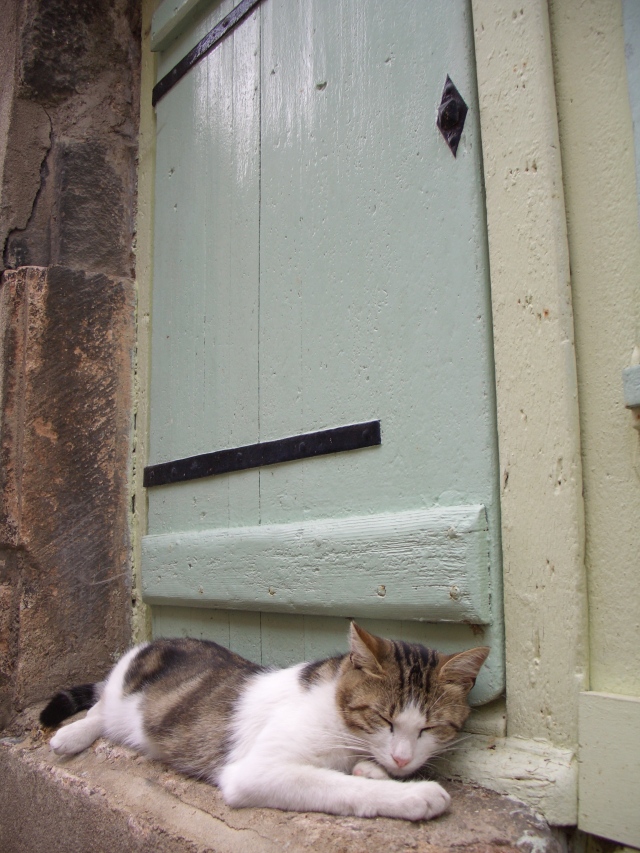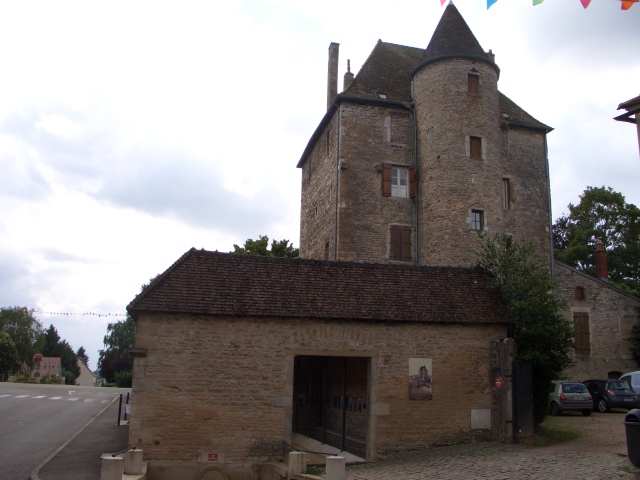The young men at the table next to ours seemed overdressed for Saturday coffee on the terrace in a tiny village. We had watched them file in, solo and in twos and threes, and now their large table was surrounded, long limbs and bare ankles stretched out underneath, seersucker suit jackets slung carefully over the backs of chairs. They ordered a raft of espressos, salade chèvre, a smattering of beers, and we waited for the waitress to lower the awning to protect us from midday sun.
Once our corner was in shade, I set to eavesdropping. (There can be no more satisfying use for nascent French skills than this.) It took fewer than three sentences before someone mentioned a wedding. The medieval church was just around the corner in the main square. My travelling companion, P, and I looked around, discreetly, to try to work out who, among those smooth faces, some adorned with tastefully manicured beards, was the groom. I couldn’t tell, but neither could I help being pulled into their orbit, into that early-twenties mixture of hope and uneasiness, feigning adulthood, learning the motions. Their energy was familiar and alien to my forty-something head. They were deep in agitated conversation, like sparrows around a birdbath.
Amid times and names and organisation, the details of which flew by too fast for my intermediate-level comprehension, I caught mention of Munich, nine dead, scores injured, and so real life intruded on southern Burgundy. The topic moved on, and the cobbled patio filled with more voices, glasses filled with local pinot, reflecting sunlight breaking through clouds. The market gardener out in the main street packed up his little stand, the thoroughfare emptied of cars.
P and I split a dozen snails, which arrived sizzling in golden butter, heavy with garlic and flecked with parsley, and two of those goat’s cheese salads, and watched the sun peak and dip into clear afternoon over Saint-Gengoux-le-National.
Much can be said of the virtues of beating a retreat from Paris in the company of an old friend, with a shiny hire car in which to explore vineyard-checked hills and crumbly hamlets. We started in Dijon, devoted a couple of hours to Beaune, then took the B roads south to digs in Saint Boil. That was Friday. This was the first full day of our long weekend and, on the advice of a laconic English neighbour (“it’s nice and there’s a shop”), found ourselves in this centuries-old village, wandering blindly. Isn’t that the best way to travel? On arriving, we asked a local to point us towards a lunch spot, and to highlight sights of interest on the map helpfully billboarded in the car park. After coffee, no dessert, we began at the church, with its twin spires (one religious, one secular) joined by a narrow wooden bridge high in the sky. We didn’t want to disturb the wedding, so we didn’t go inside.

L’Eglise de Saint-Gengoux was first cited in the 10th century, according to Wikipedia (yes, I need to upgrade my research tools), under the growing influence of the abbey in nearby Cluny, but a new church was built in 1120, just a few decades before the village and its surrounds were ceded to King Louis VIII. (The town was then renamed Saint-Gengoux-le-Royal, becoming Jouvence after the Revolution, and reverting quietly to Saint-Gengoux-le-National in 1870.)

Opposite the church, more or less, are the remains of a 13th-century castle and washhouse (pictured below), and all around the town centre snake immaculate narrow streets, with requisite geraniums, passageways and picturesque cats posing for next year’s Felines of France calendar. As P was snapping someone’s private garden, the owner appeared with a breezy “Bonjour!” and an offer to visit the wine cellar under her house. Chantelle introduced herself and explained that the house had once been used to produce wine, pointing to the hole in the cellar ceiling where the pressed juice would pour into barrels below to be turned into wine. These days, the constant temperature makes it ideal for the family’s pinot noir collection. We silently willed the invitation to include a tasting. No such luck. But a quick exchange about the perils of modern life and the necessity of living boldly regardless of threats and current events did offer a chance to practise French.

The village is built on a hill that slopes gently to the Grosne river. We went in the opposite direction, up past the fountain, up to the remnants of defensive towers, up to a view over fields and forests. Up past rows of 19th-century houses that care little for time. I stood on the picnic table to better frame my photographs.

On the way back to the car, we met wedding guests, tottering in heels, chiffon dresses floating on the breeze. The bunting over the streets could have been strung for the occasion, rather than for the twice-monthly Tuesday markets. By this time, even the supermarket was shut and it was easy to re-imagine the streetscape as it might have been in its Middle Ages heyday.


Hi Liza, With your normal attitude you have that amazing ability to mix the palette with description and a little laconic Aussie comments. I enjoy sharing your insights. You make me feel that I am there with you. Keep up the great work.
LikeLike
Easy to forget sometimes in Paris that the rest of the country is always worth a visit!
LikeLike